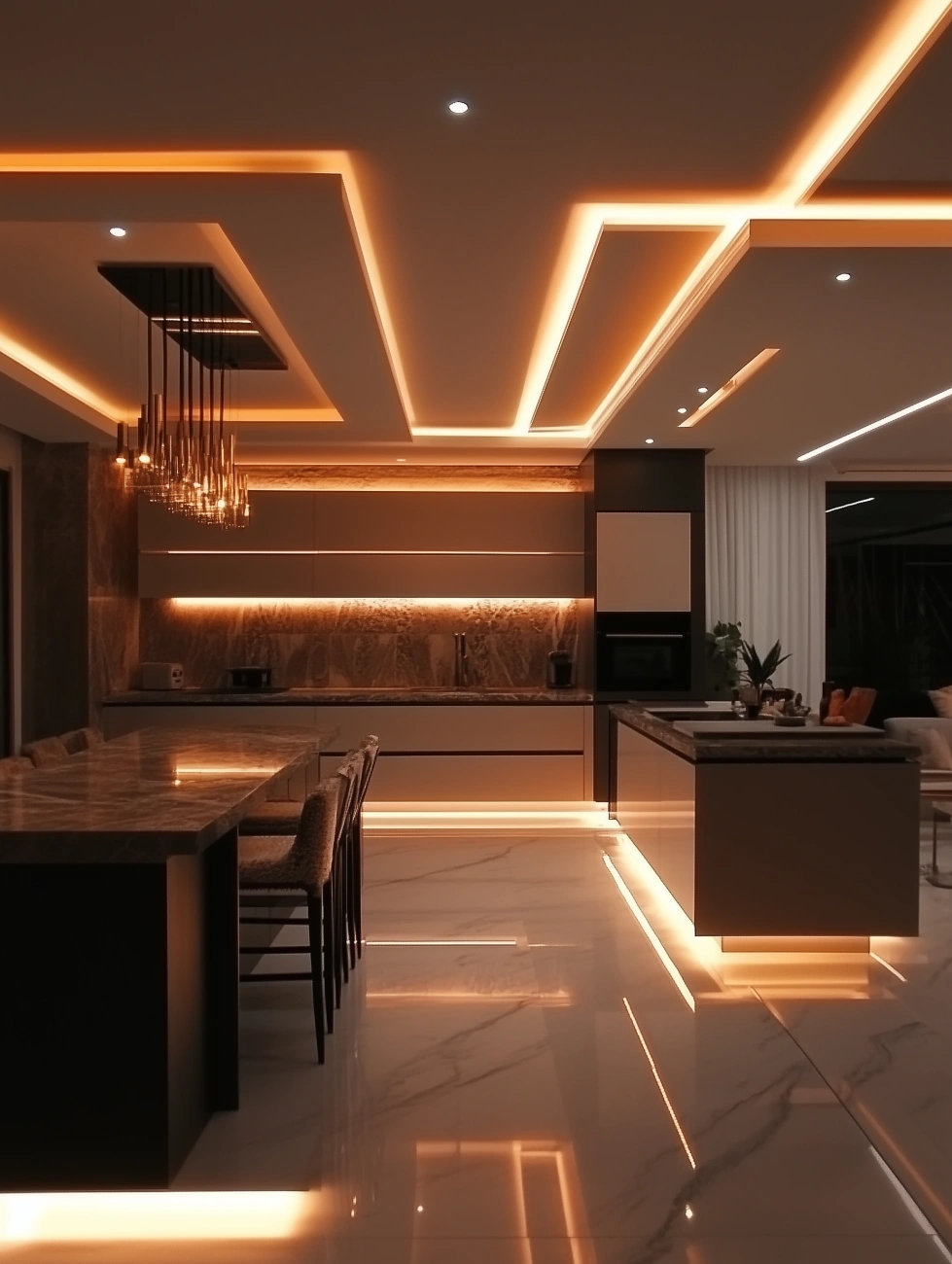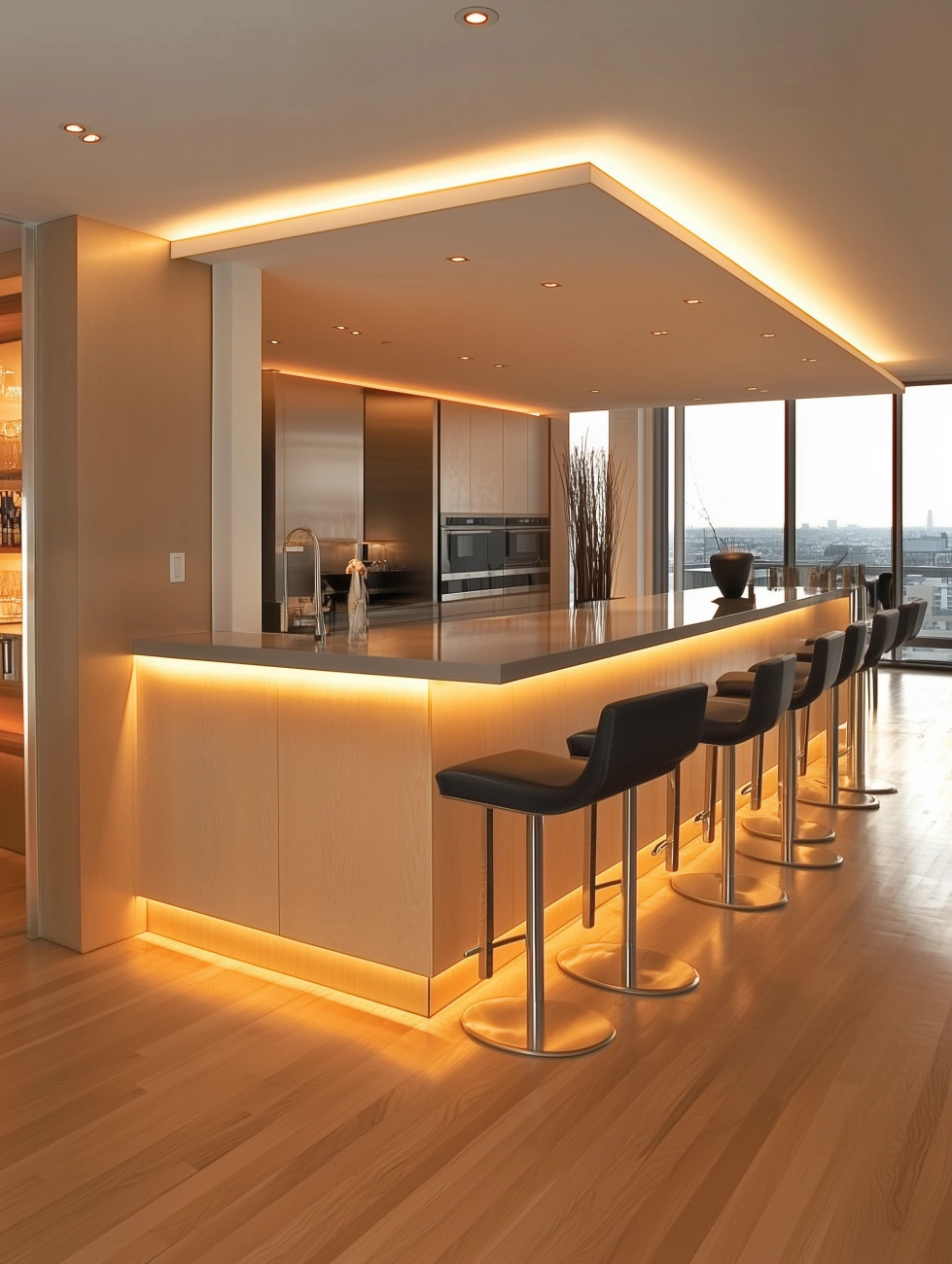
Lighting is one of the most crucial elements in kitchen design. It not only enhances the aesthetic appeal of the space but also plays a significant role in functionality, safety, and comfort. kitchen lighting design is therefore an important consideration in your overall kitchen upgrade.
A well-lit kitchen creates a welcoming atmosphere while ensuring that cooking, dining, and entertaining are both enjoyable and practical.
With so many lighting options available, homeowners must carefully plan their kitchen lighting design to ensure a perfect balance of brightness, efficiency, and style.
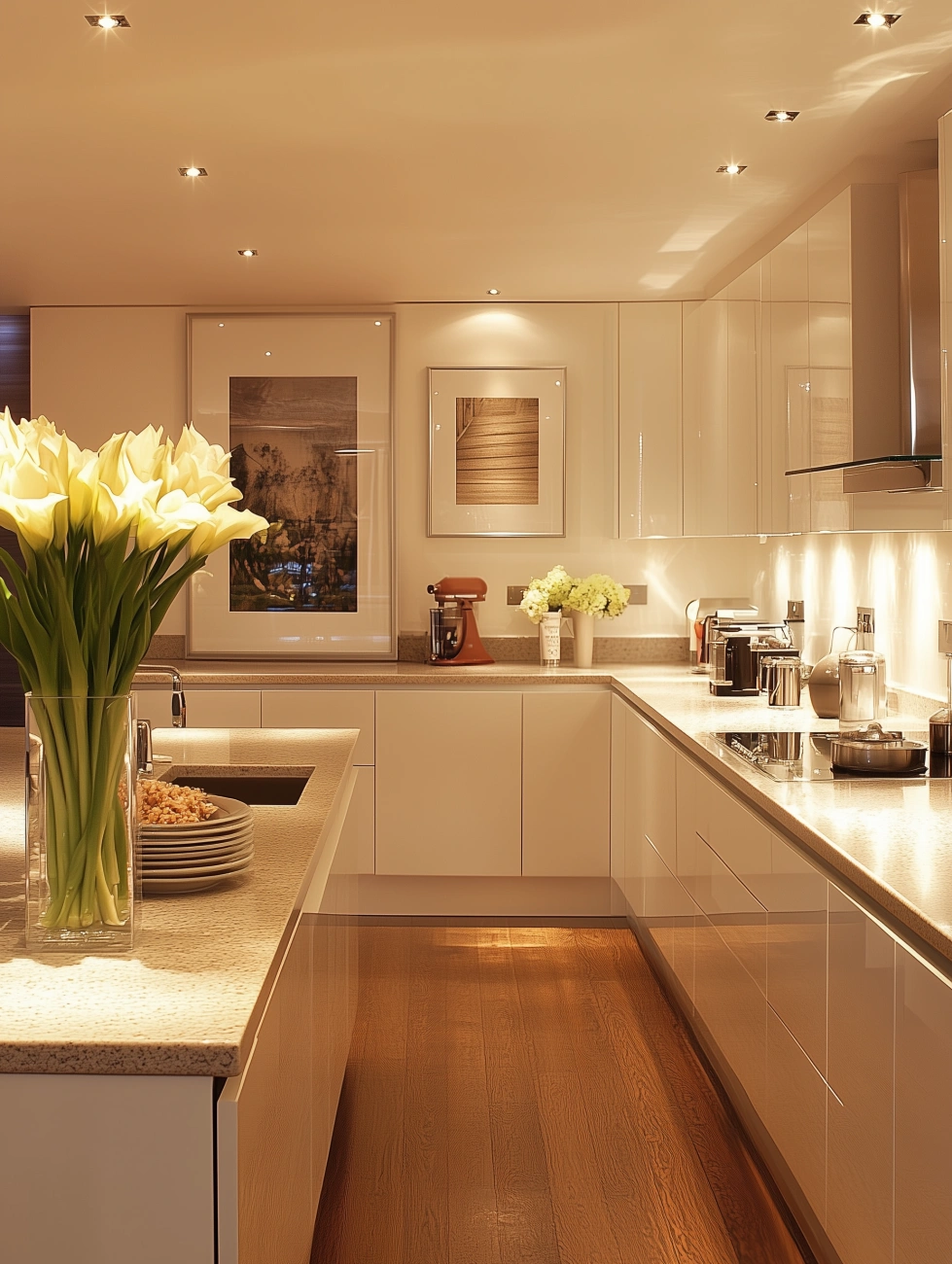
A well-designed kitchen lighting plan involves layering different types of lighting to meet various needs. From ambient lighting that provides general illumination to task lighting that enhances functionality and accent lighting that adds character, each element plays a vital role in transforming the kitchen into a functional and stylish space.
In this guide, we’ll explore the key considerations homeowners should keep in mind when selecting kitchen lighting, ensuring the perfect blend of practicality and aesthetics.
1. The Importance of Layered Lighting in the Kitchen
A single light fixture isn’t enough to properly illuminate a kitchen. A well-lit kitchen incorporates three primary types of lighting:
- Ambient Lighting: The foundation of kitchen lighting, ambient lighting provides overall illumination and ensures the space is bright and inviting. This is typically achieved through recessed lights, ceiling-mounted fixtures, or chandeliers.
- Task Lighting: As the name suggests, task lighting is focused illumination designed for specific work areas. It is essential for meal prep, cooking, and other detailed tasks. Common examples include under-cabinet lighting, pendant lights over islands, and track lighting directed at countertops.
- Accent Lighting: This type of lighting is used to highlight architectural or decorative features in the kitchen. LED strips inside glass cabinets, toe-kick lighting along the base of cabinets, or spotlights on artwork can add depth and character to the space.
By layering these three types of lighting, homeowners can ensure their kitchen is both highly functional and visually appealing.
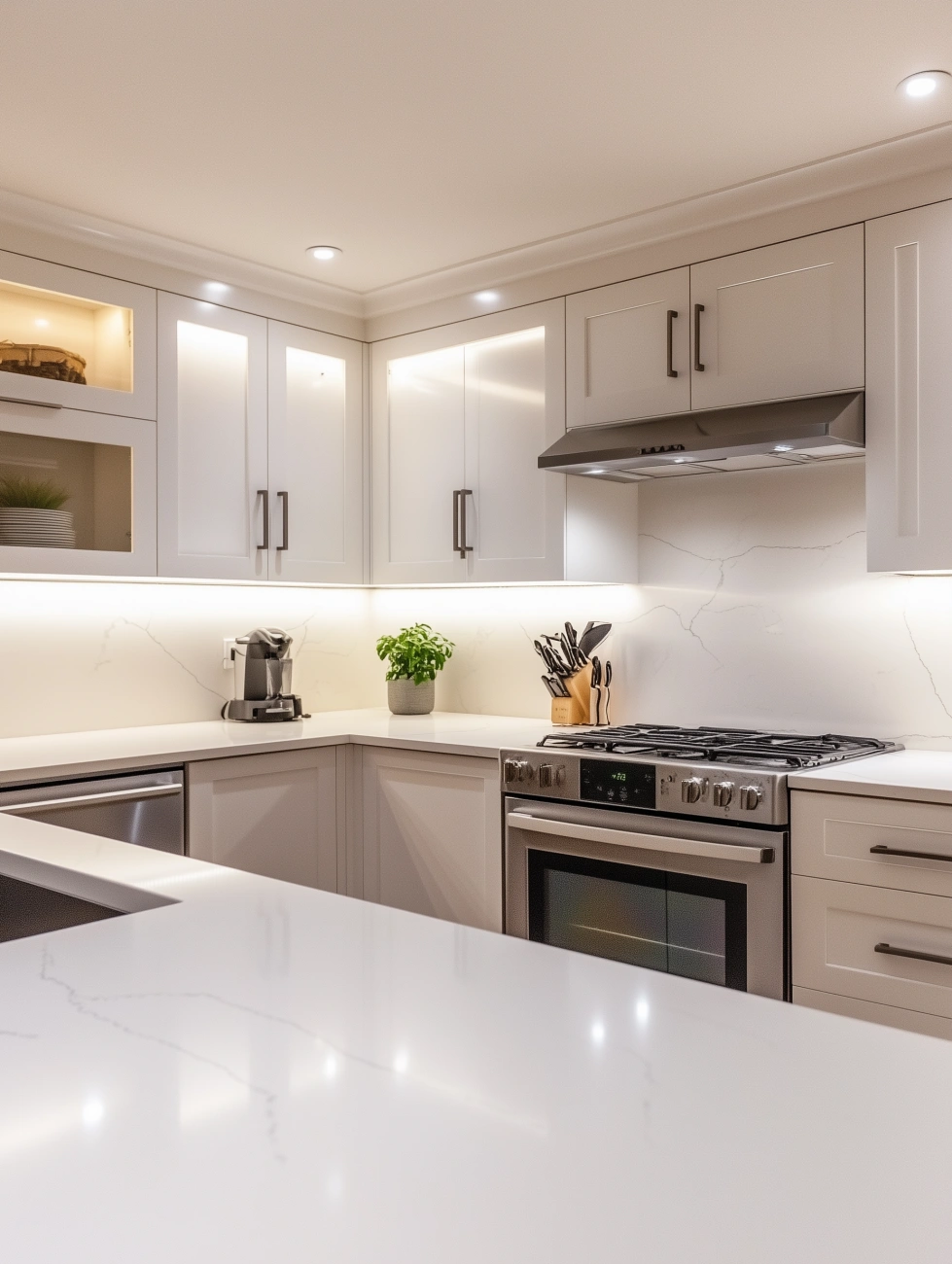
2. Choosing the Right Ambient Lighting
Ambient lighting serves as the base layer of illumination in the kitchen, ensuring there is even brightness throughout the space.
Best Ambient Lighting Options
- Recessed Lighting: These ceiling-mounted fixtures provide a clean, modern look and can be strategically placed to evenly distribute light across the kitchen.
- Flush and Semi-Flush Ceiling Lights: Ideal for smaller kitchens, these fixtures provide broad illumination while adding a decorative touch.
- Chandeliers and Large Pendants: A chandelier or oversized pendant light can serve as a statement piece, adding both function and style to a kitchen with high ceilings.
Placement Considerations
When installing ambient lighting, it’s essential to ensure that the entire kitchen is evenly illuminated. Homeowners should avoid creating dark corners by spacing recessed lights appropriately (typically 4-6 feet apart) and ensuring that ceiling fixtures are positioned to provide balanced brightness.
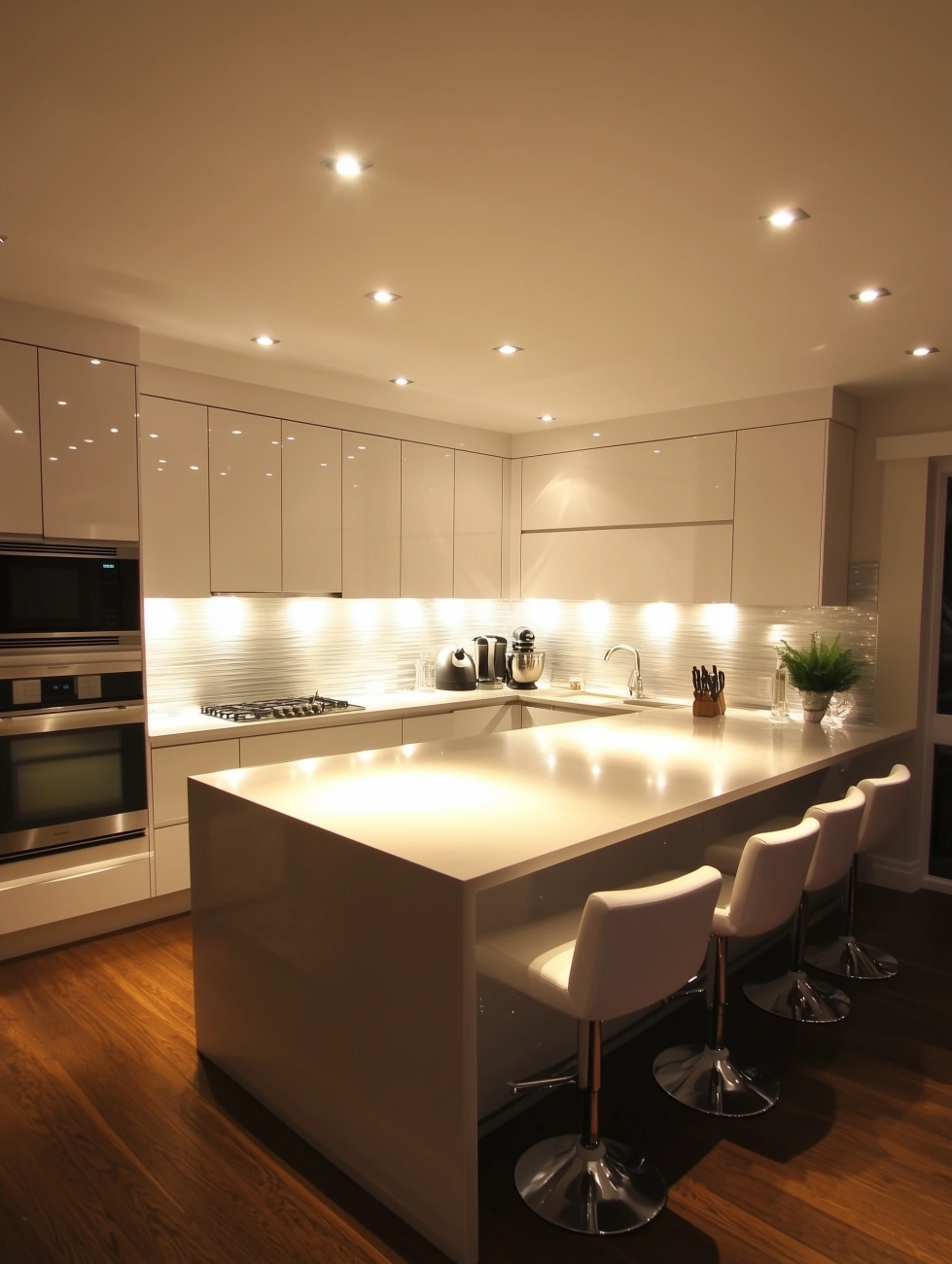
3. Task Lighting: Enhancing Functionality
While ambient lighting brightens the entire room, task lighting provides focused illumination where it is needed most. Since the kitchen involves a lot of detailed tasks—like chopping vegetables, reading recipes, and cooking at the stove—adequate task lighting is essential.
Best Task Lighting Options
- Under-Cabinet Lighting: One of the most effective forms of task lighting, under-cabinet LED strips or puck lights illuminate countertops, making meal preparation easier.
- Pendant Lights: These are perfect for islands and dining areas, offering direct lighting while adding a stylish element to the kitchen’s design.
- Track Lighting: Adjustable track lights allow homeowners to direct light to different areas of the kitchen as needed.
- Range Hood Lighting: Built-in lights in range hoods provide additional illumination over the stove, improving visibility for cooking.

Placement Considerations
For under-cabinet lighting, homeowners should ensure the lights are positioned towards the front edge of the cabinet rather than the back, preventing shadows from being cast onto the workspace. Pendant lights should be hung 30 to 36 inches above the island or countertop to ensure proper brightness without obstructing views.
4. Accent Lighting: Adding Depth and Style
Accent lighting adds character and dimension to a kitchen, transforming it from a simple cooking space into a stylish and inviting environment. While accent lighting is often considered decorative, it can also serve functional purposes, such as highlighting important areas.
Best Accent Lighting Options
- Cabinet Lighting: LED strip lights or puck lights inside glass-front cabinets highlight dishware and collectibles.
- Toe-Kick Lighting: Placed along the base of lower cabinets, this subtle lighting adds a warm glow, especially at night.
- Cove Lighting: Installed along the top of kitchen cabinets, cove lighting provides a soft, indirect glow that enhances the ambiance.
- Wall Sconces: These add a decorative touch while also providing supplemental lighting near dining areas or open shelving.
Placement Considerations
Accent lighting should be used sparingly to avoid an overly cluttered or overwhelming look. Homeowners should focus on areas that benefit from added illumination, such as display cabinets, architectural details, or the perimeter of the kitchen.
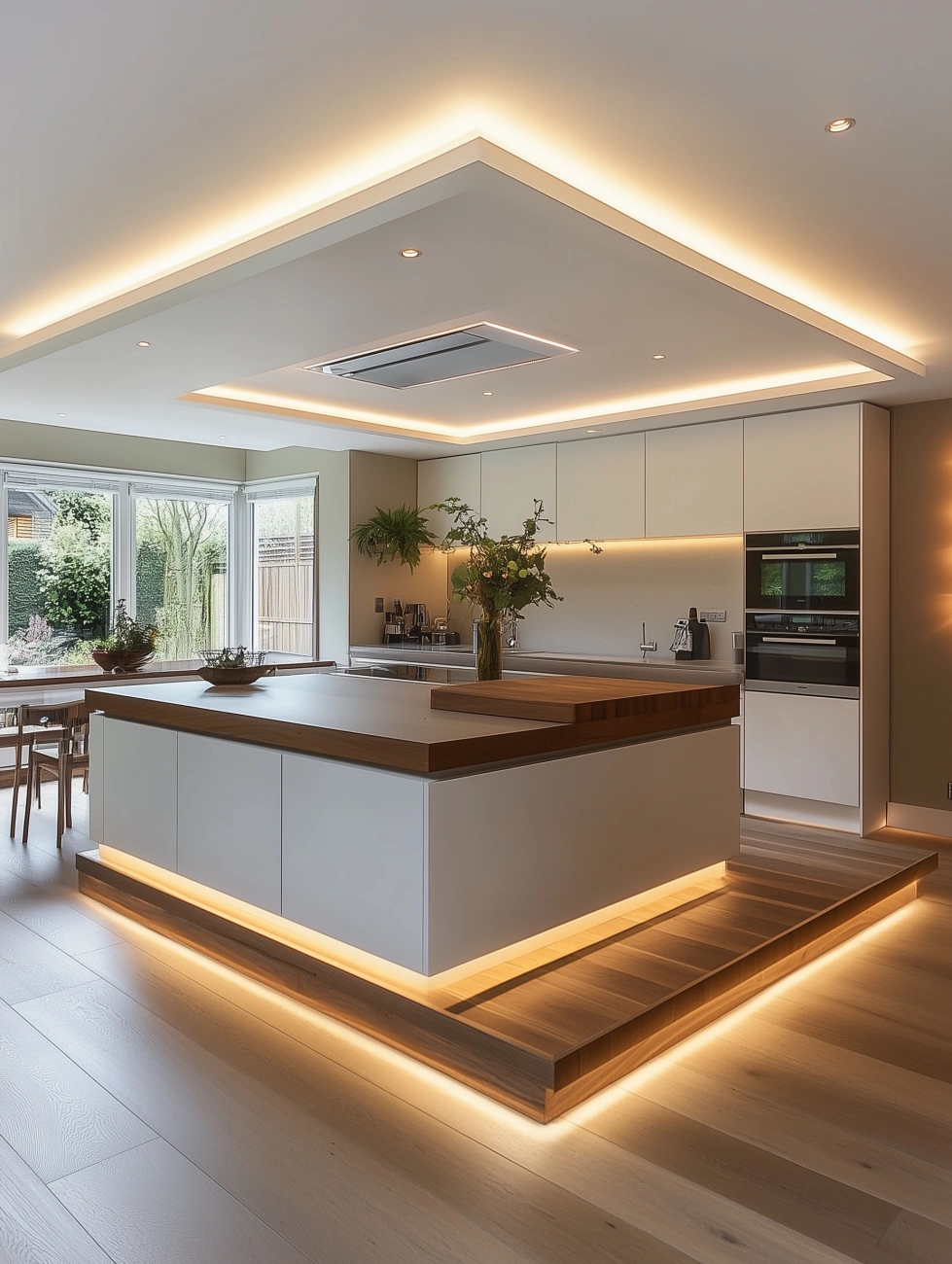
5. Energy Efficiency and Smart Lighting Solutions
As homeowners become more environmentally conscious, energy-efficient lighting solutions have gained popularity. LED lighting is an excellent choice due to its long lifespan, reduced energy consumption, and bright illumination.
Energy-Efficient Lighting Options
- LED Bulbs: These consume up to 80% less energy than incandescent bulbs and last significantly longer.
- Dimmable Fixtures: Installing dimmable lights allows homeowners to adjust brightness levels, reducing energy use when full illumination isn’t necessary.
- Motion Sensors: These automatically turn lights on and off, reducing waste and enhancing convenience.
- Smart Lighting Systems: Homeowners can control their kitchen lights via smartphone apps, voice assistants, or preset schedules, optimising both energy efficiency and convenience.
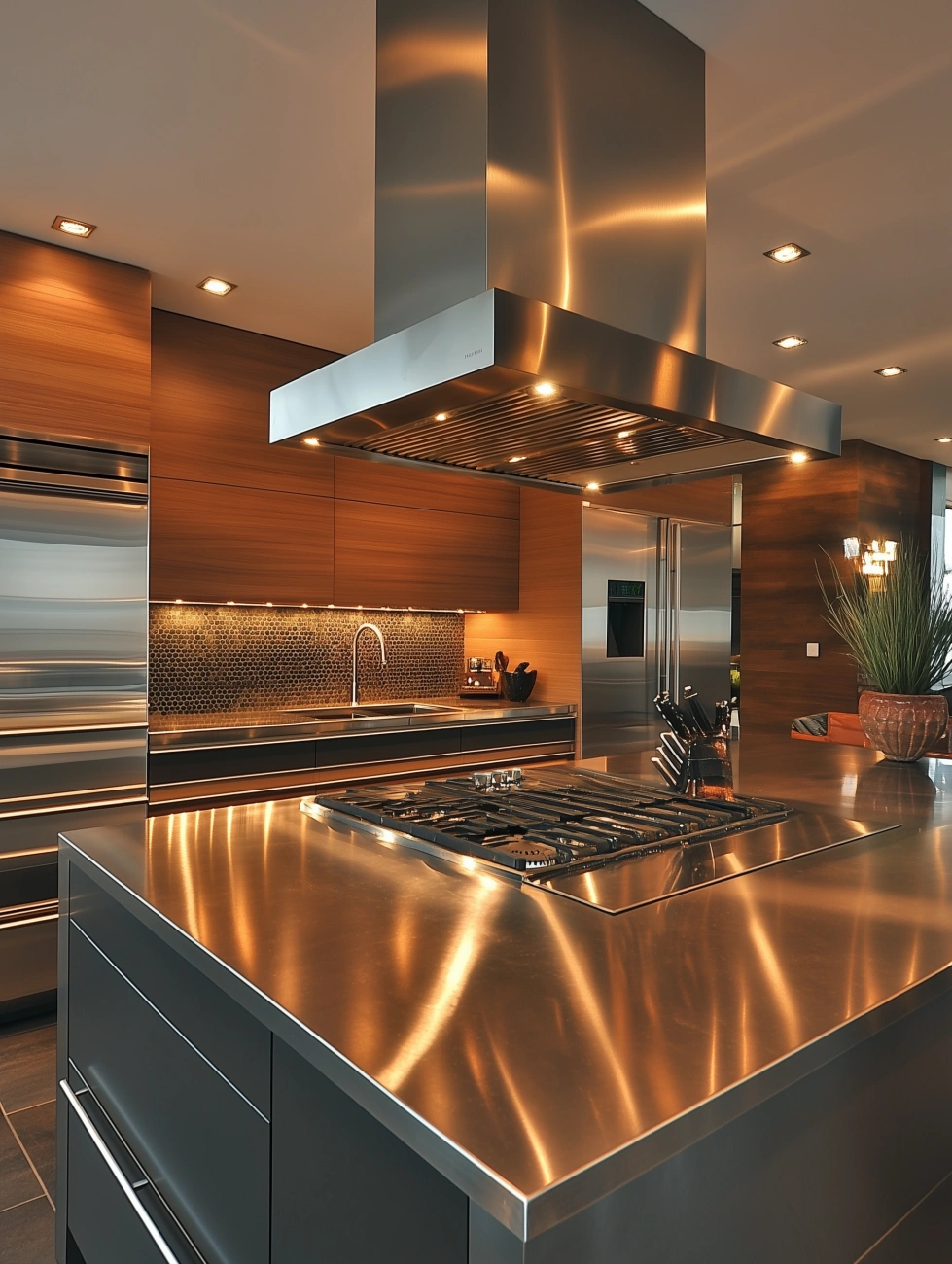
6. The Role of Colour Temperature in Kitchen Lighting
The colour temperature of light bulbs significantly impacts the kitchen’s atmosphere. Measured in Kelvin (K), different colour temperatures create distinct moods:
- Warm White (2700K – 3000K): Creates a cozy, inviting ambiance, ideal for kitchens with traditional or rustic decor.
- Cool White (3500K – 4500K): Provides bright, neutral illumination, perfect for contemporary kitchens.
- Daylight (5000K – 6500K): Mimics natural sunlight, enhancing visibility and focus—ideal for task lighting.
For a versatile lighting scheme, homeowners may consider adjustable or tunable LED lights, which allow for switching between warm and cool tones depending on the time of day or activity.
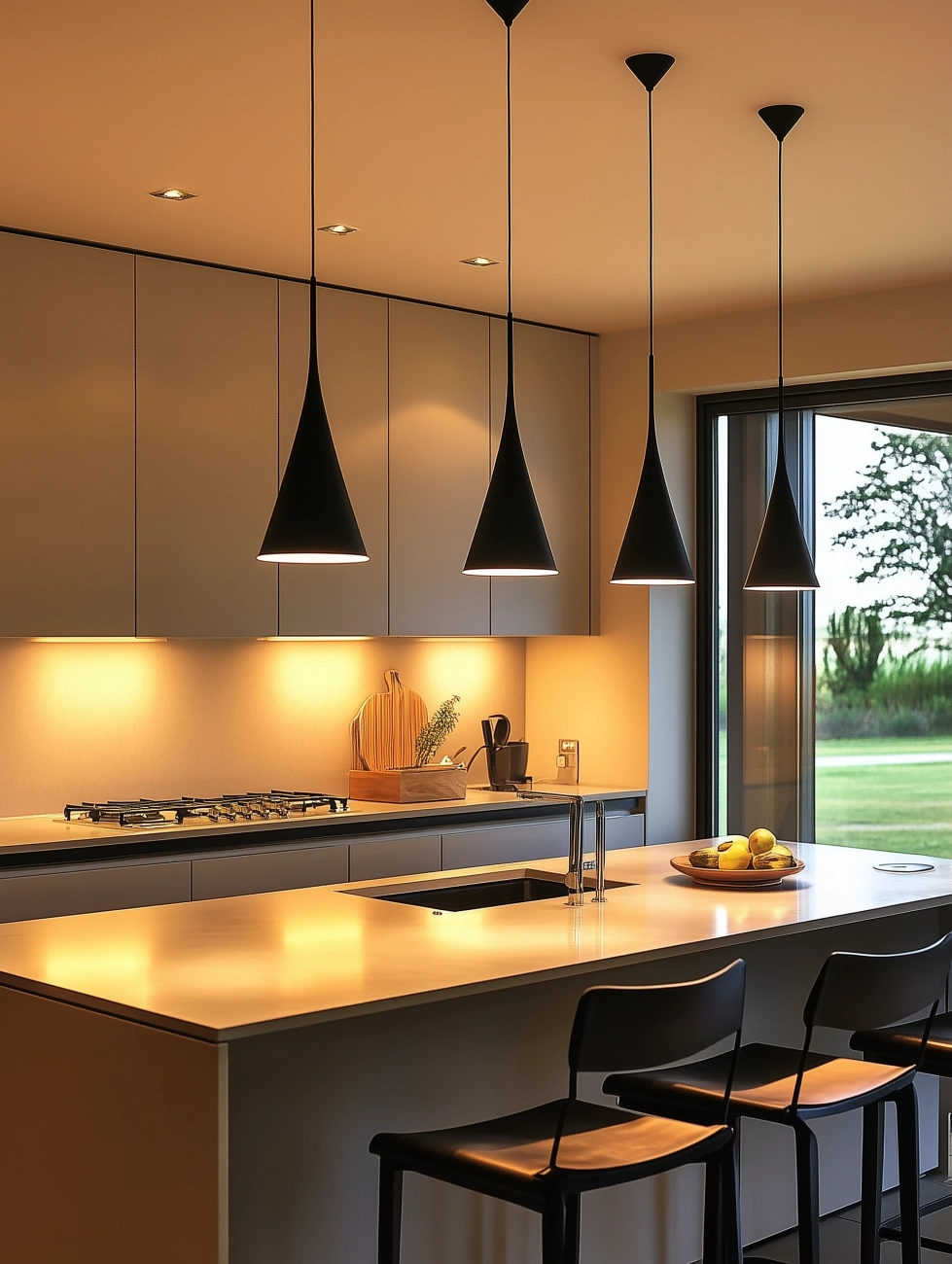
Final Thoughts
A well-thought-out kitchen lighting plan enhances both functionality and aesthetics. By layering ambient, task, and accent lighting, homeowners can create a bright, efficient, and stylish space. Strategic placement of fixtures ensures even illumination, while energy-efficient and smart lighting solutions help reduce costs and improve convenience.
Whether you’re renovating your kitchen or simply updating the lighting, considering design, efficiency, and practicality will ensure that your kitchen remains the heart of the home—warm, welcoming, and perfectly illuminated.
